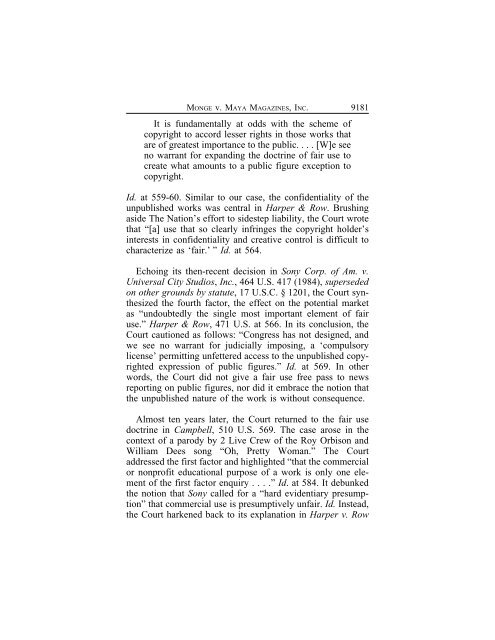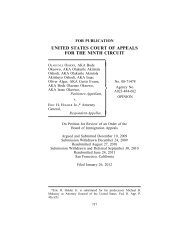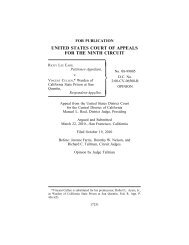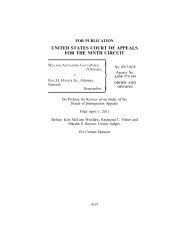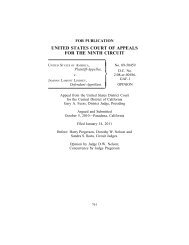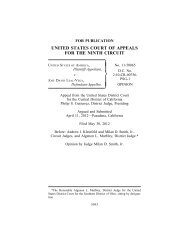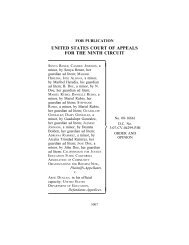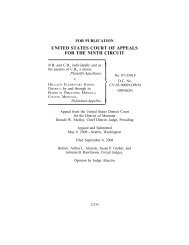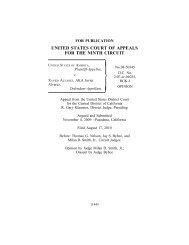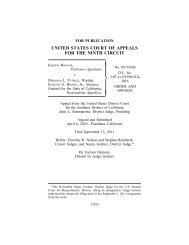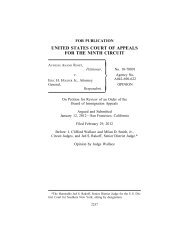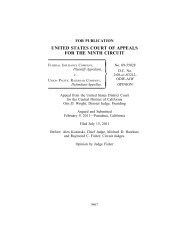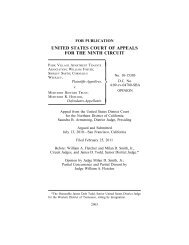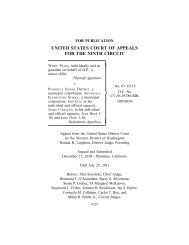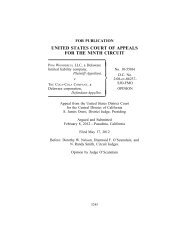NOELIA MONGE V. MAYA MAGAZINES, INC. - Ninth Circuit Court of ...
NOELIA MONGE V. MAYA MAGAZINES, INC. - Ninth Circuit Court of ...
NOELIA MONGE V. MAYA MAGAZINES, INC. - Ninth Circuit Court of ...
Create successful ePaper yourself
Turn your PDF publications into a flip-book with our unique Google optimized e-Paper software.
<strong>MONGE</strong> v. <strong>MAYA</strong> <strong>MAGAZINES</strong>, <strong>INC</strong>.<br />
It is fundamentally at odds with the scheme <strong>of</strong><br />
copyright to accord lesser rights in those works that<br />
are <strong>of</strong> greatest importance to the public. . . . [W]e see<br />
no warrant for expanding the doctrine <strong>of</strong> fair use to<br />
create what amounts to a public figure exception to<br />
copyright.<br />
9181<br />
Id. at 559-60. Similar to our case, the confidentiality <strong>of</strong> the<br />
unpublished works was central in Harper & Row. Brushing<br />
aside The Nation’s effort to sidestep liability, the <strong>Court</strong> wrote<br />
that “[a] use that so clearly infringes the copyright holder’s<br />
interests in confidentiality and creative control is difficult to<br />
characterize as ‘fair.’ ” Id. at 564.<br />
Echoing its then-recent decision in Sony Corp. <strong>of</strong> Am. v.<br />
Universal City Studios, Inc., 464 U.S. 417 (1984), superseded<br />
on other grounds by statute, 17 U.S.C. § 1201, the <strong>Court</strong> synthesized<br />
the fourth factor, the effect on the potential market<br />
as “undoubtedly the single most important element <strong>of</strong> fair<br />
use.” Harper & Row, 471 U.S. at 566. In its conclusion, the<br />
<strong>Court</strong> cautioned as follows: “Congress has not designed, and<br />
we see no warrant for judicially imposing, a ‘compulsory<br />
license’ permitting unfettered access to the unpublished copyrighted<br />
expression <strong>of</strong> public figures.” Id. at 569. In other<br />
words, the <strong>Court</strong> did not give a fair use free pass to news<br />
reporting on public figures, nor did it embrace the notion that<br />
the unpublished nature <strong>of</strong> the work is without consequence.<br />
Almost ten years later, the <strong>Court</strong> returned to the fair use<br />
doctrine in Campbell, 510 U.S. 569. The case arose in the<br />
context <strong>of</strong> a parody by 2 Live Crew <strong>of</strong> the Roy Orbison and<br />
William Dees song “Oh, Pretty Woman.” The <strong>Court</strong><br />
addressed the first factor and highlighted “that the commercial<br />
or nonpr<strong>of</strong>it educational purpose <strong>of</strong> a work is only one element<br />
<strong>of</strong> the first factor enquiry . . . .” Id. at 584. It debunked<br />
the notion that Sony called for a “hard evidentiary presumption”<br />
that commercial use is presumptively unfair. Id. Instead,<br />
the <strong>Court</strong> harkened back to its explanation in Harper v. Row


